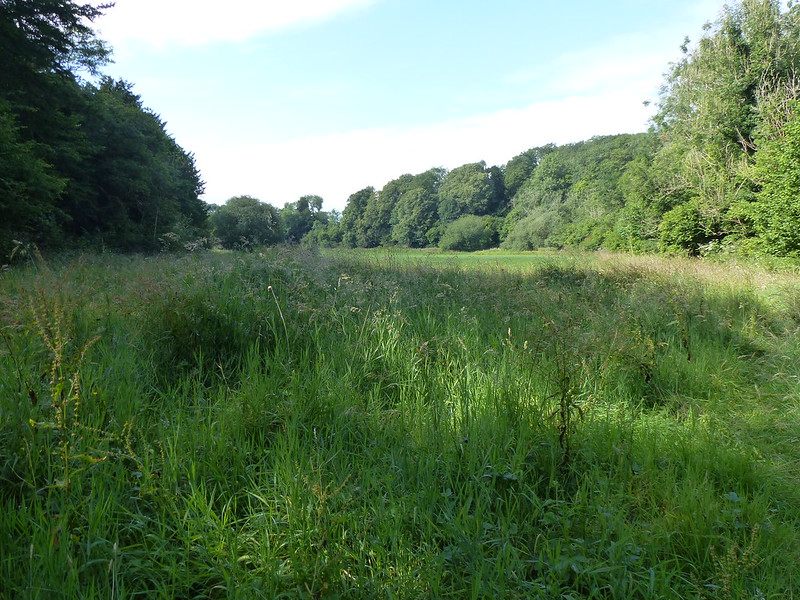
We were at home for a few days before heading off for our big summer trip. I guess we must have been busy, I didn’t get out much, but when the sun shone I did have a wander to Lambert’s Meadow, to see what I could see. Our trip, which I’ll hopefully get to soon, was to the USA. I didn’t take my camera, but I did take a ridiculous number of photos on my phone, so there’s a lengthy selection process ahead.
The photos from this short local wander can be a bit of a dress rehearsal then; I took three hundred, a nice round number, and about par for the course when I spend a bit of time at Lambert’s Meadow.

Of course, there’s a great deal of repetition; my first eleven shots that day were all of Migrant Hawkers; there were several on and around a thicket of brambles where I entered Burtonwell Wood from Silverdale Green. An easy decision in this case, just to crop the most likely looking pictures and then chose my favourite.
On the other hand, this Common Carder bee, on the same set of unripe blackberries, only posed for a single photo.

When I look at the photos which have come up to scratch, although I took quite a lot of photos of bumblebees, of various species, there’s a preponderance of Common Carder bees amongst the ones I’ve chosen. Admittedly, I am a bit biased in favour of Common Carders, for two reasons; firstly their lovely ginger colour, and then the fact that they are relatively easy to distinguish from other common species; but I think that there may be a bit more to it than that; I seem to have more luck getting sharpish images of Common Carders than of other bumblebees; I’m beginning to think that they may linger that little bit longer on flowers than other species.
The single shot I took of the disappearing rump of a Roe Deer in the woods was a bit disappointing, and so is not here, partly because I get much better opportunities to photograph deer in our garden. This tiny spider feasting on a fly, on the other hand, is included because I rarely manage to catch spiders with their prey, even though it was taken in the shade and isn’t especially sharp.
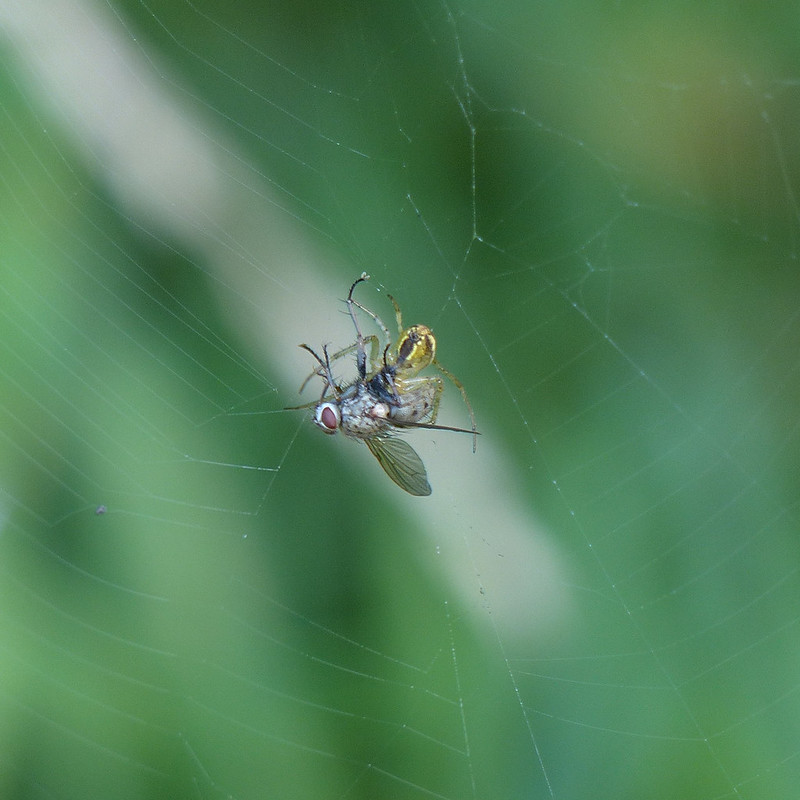
I’ve decided to keep the photos largely chronological, and not to group them thematically, and, for instance, put all of the hoverflies together, something I have done on occasion with previous similar posts.
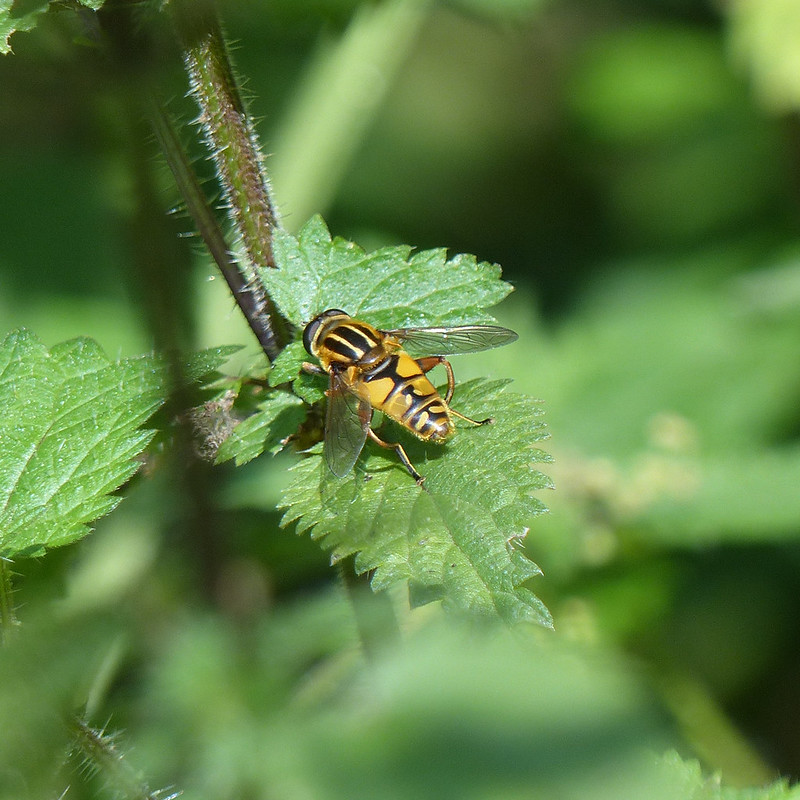
This particular hoverfly might be Helophilus pendulus. Sometimes called ‘the Footballer’ apparently, because of its bold markings. Rather lovely in my opinion. However, there are several very similar species, so I could be wrong. Helophilus means ‘marsh-lover’ which would fit well with this location.
I did put these two snails together, the better to compare and contrast their shells…
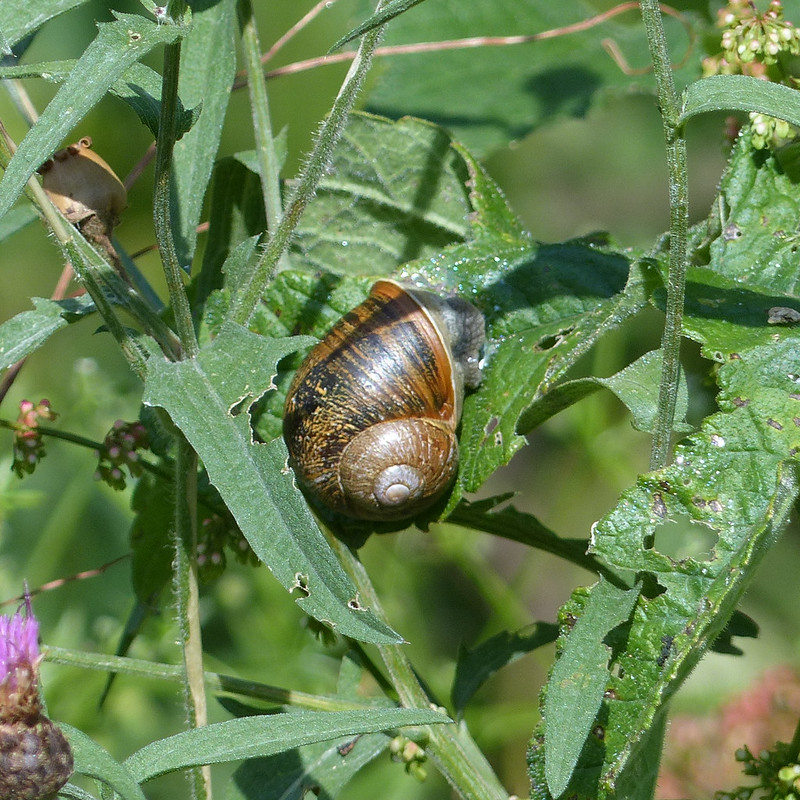
This first is definitely a Garden Snail, with its dark bands on its shell.

My best guess is that this is a copse snail; they are usually more mottled than this, although they do seem to be quite variable.
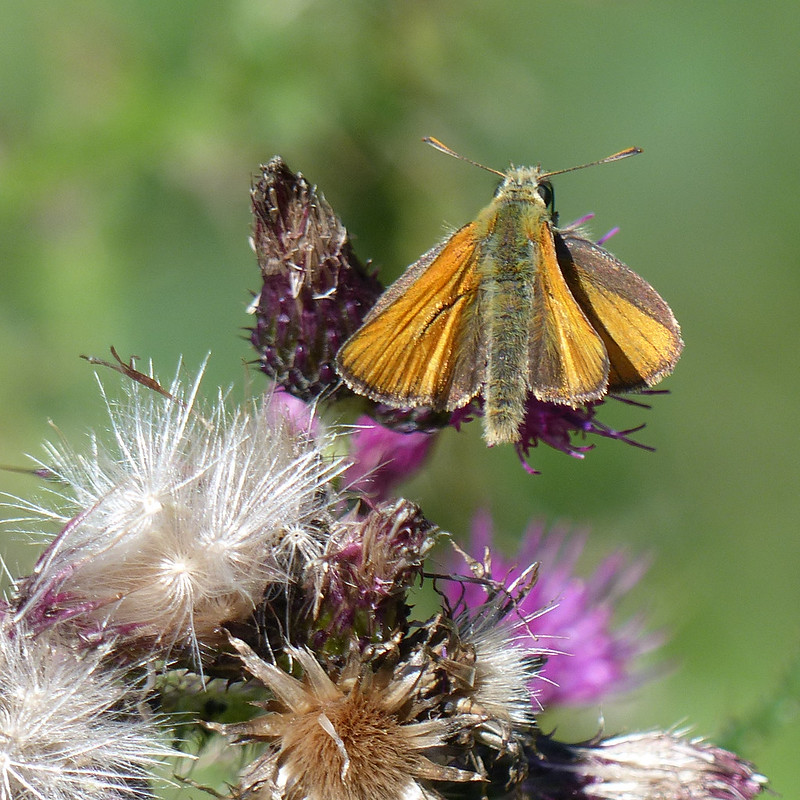
There were lots and lots of butterflies about, which was rather wonderful, although at first I thought none of them would alight long enough for me to get any decent photos. However, if you hang around long enough, your chance eventually comes.
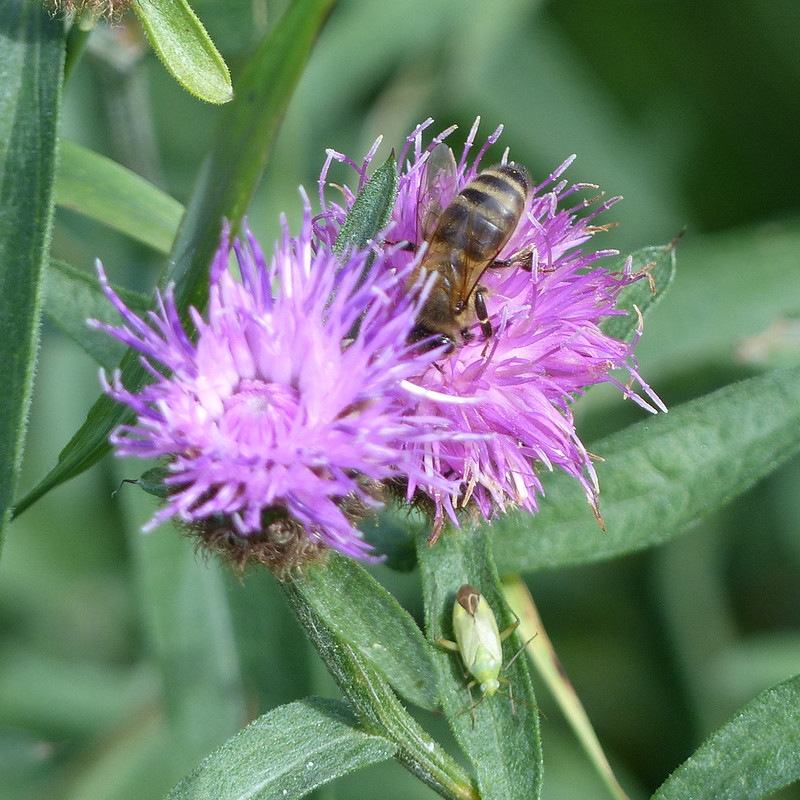
This photo gets in because of the photo-bombing bug. I think the bug might be a Potato Capsid, but my confidence is even lower than usual.
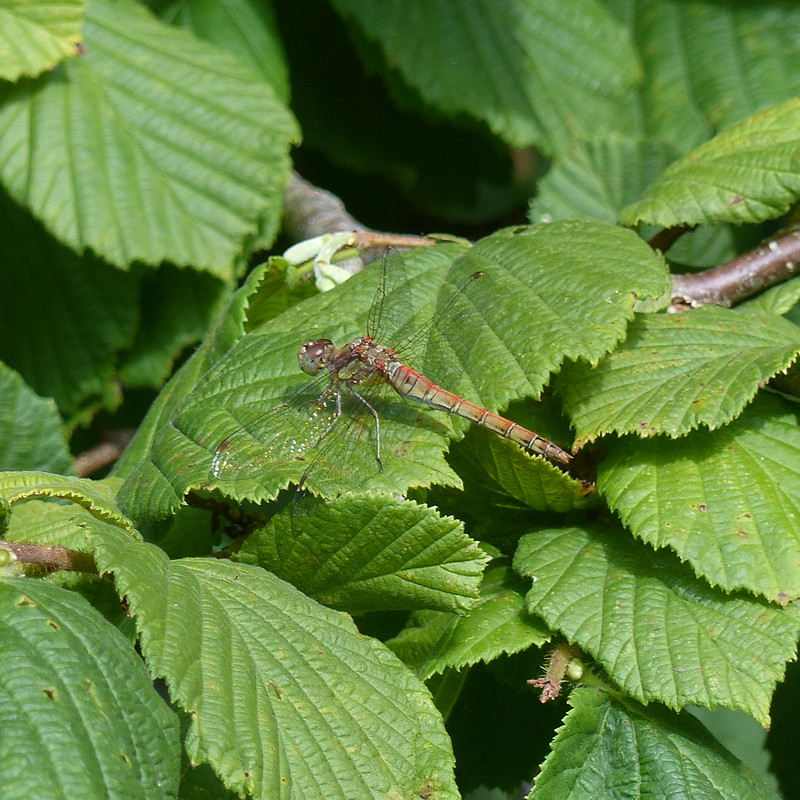
There were lots of dragonflies about too, but they were mostly airborne, and surprisingly difficult to spot when they landed.
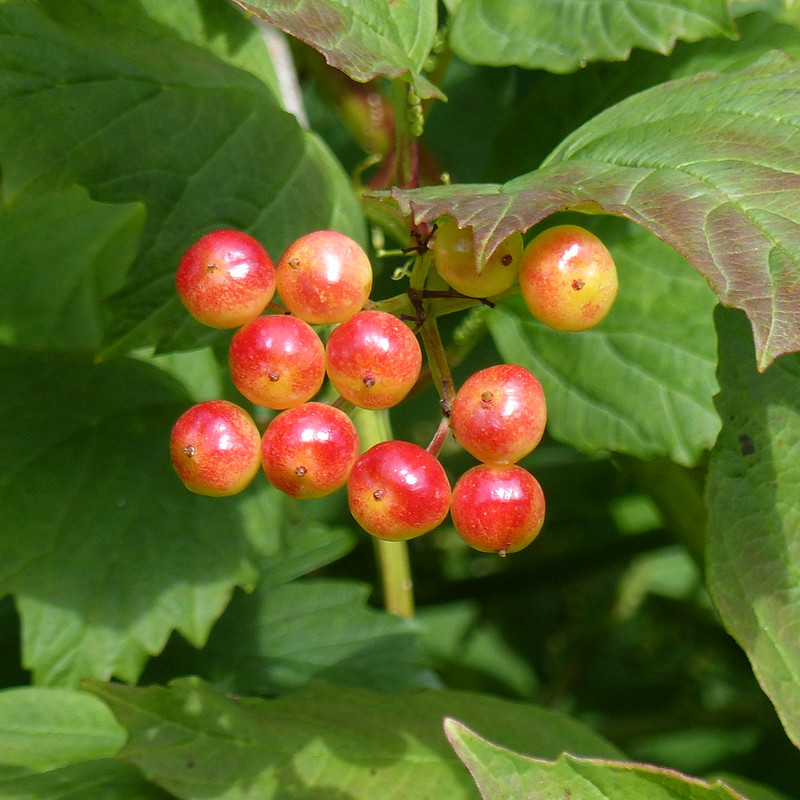

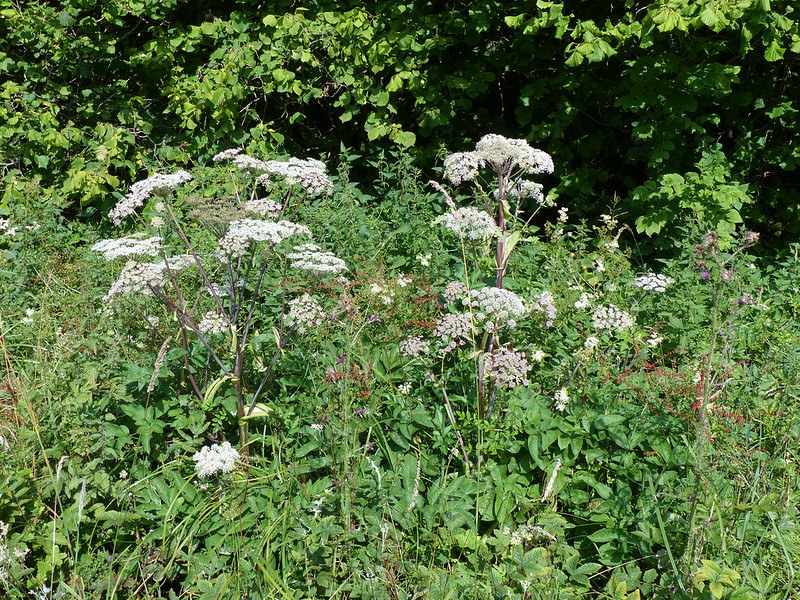

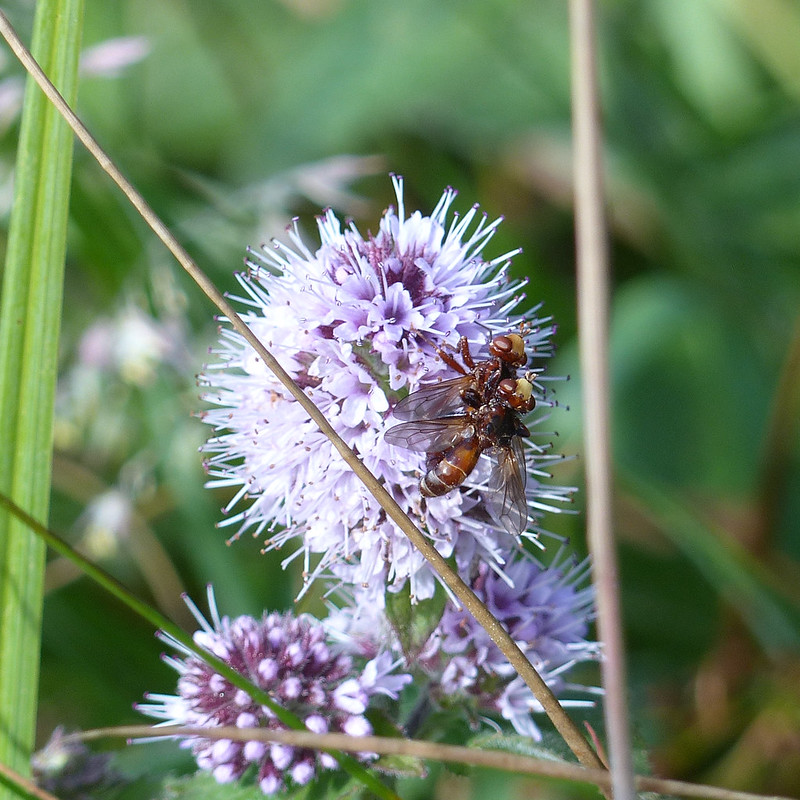
With a bit of lazy internet research, I’ve unearthed two different ‘common’ names for these odd looking flies: Ferrugineus Bee-grabber and Thick-headed Fly. The photo in my Field Guide shows a mating pair and this pair, although they moved around the mint flower a lot, didn’t seem likely to be put-off. In fact when I wandered back around the meadow I spotted a pair, probably the same pair, still mating in much the same spot. The adults feed on nectar, but the larvae are endoparasites, over-wintering and pupating inside Bumblebees.
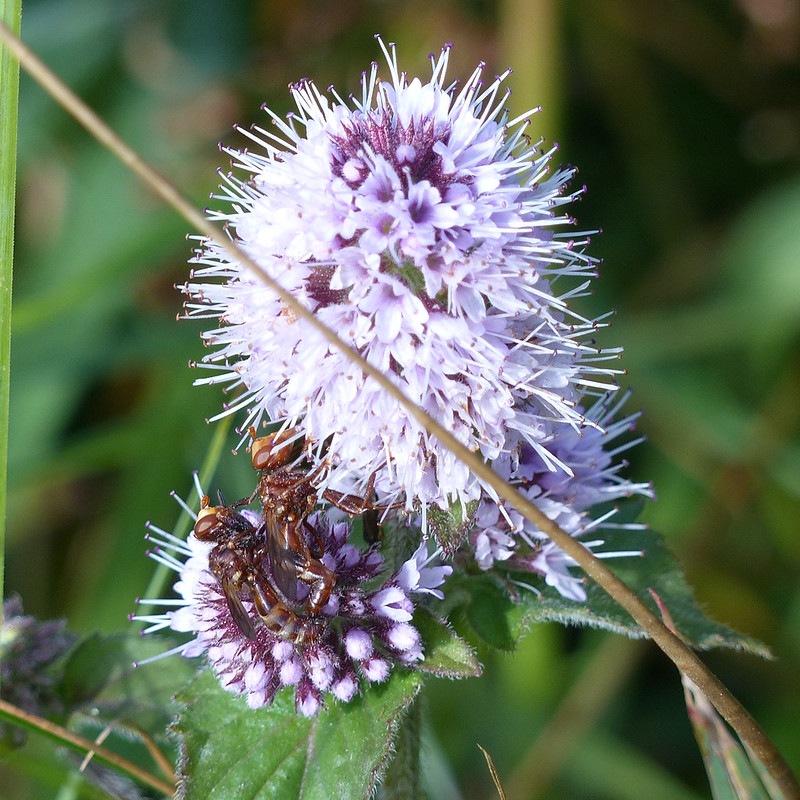
Ferruginous means either: ‘containing iron oxides or rust’, or ‘reddish brown, rust-coloured’; which seems appropriate. I’m guessing that ferrugineus is the latin spelling.
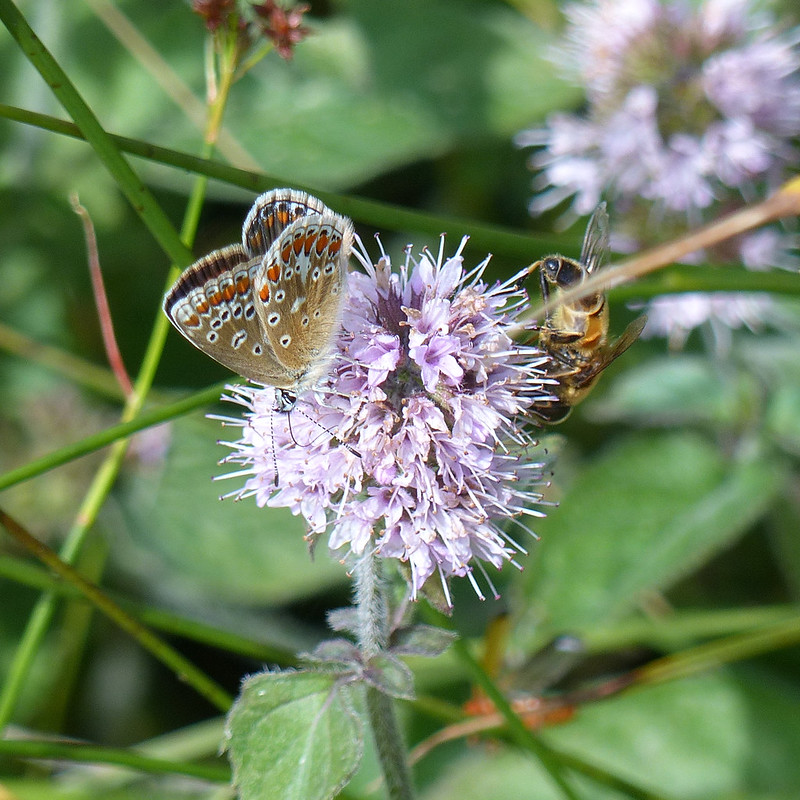
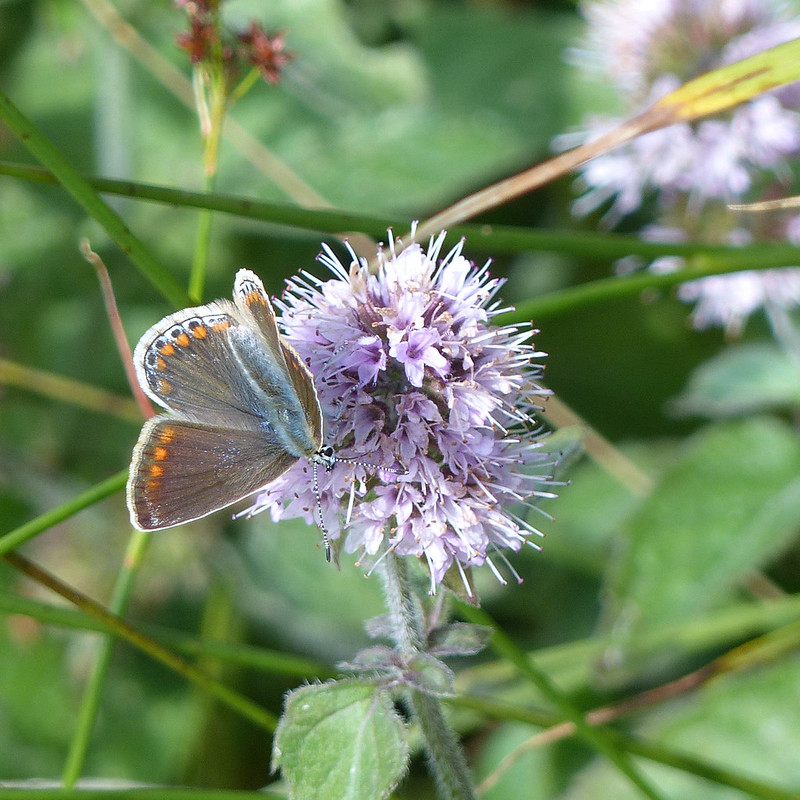
You’ll notice that a lot of the insects are on Mint flowers. Earlier in the year it would have been Marsh Thistles.
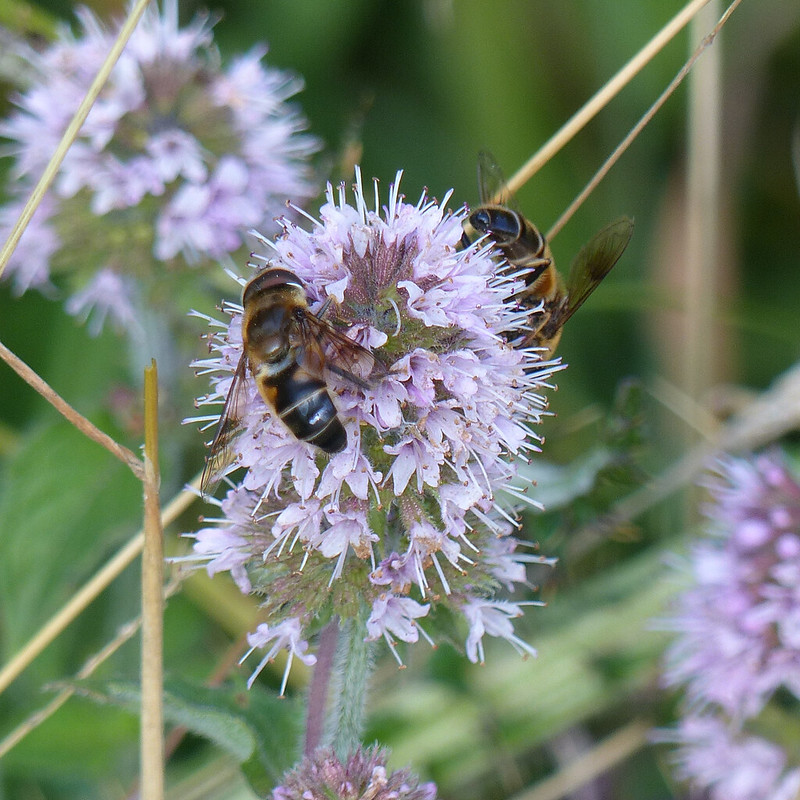
My best guess is that these are Drone-flies. They are excellent Honey bee mimics, but, as far as I know, don’t harm bees in any way, so good for them. More lazy research turned up this titbit:
“Recent research shows that the Drone-fly does not only mimic the Honeybee in look, but also in the way that it moves about, following the same flight patterns.”

I haven’t counted, but I’d be willing to bet that I took more photos of Meadow Browns than of anything else. There were a lot about. I resolved not to take any more photos of what is, after all, a very common and slightly dull species, at which point the local Meadow Brown community seemed to agree that they would disport themselves in front of my lens at every opportunity, in a ‘you know you want to’ sort of way, and my resolve kept crumbling.
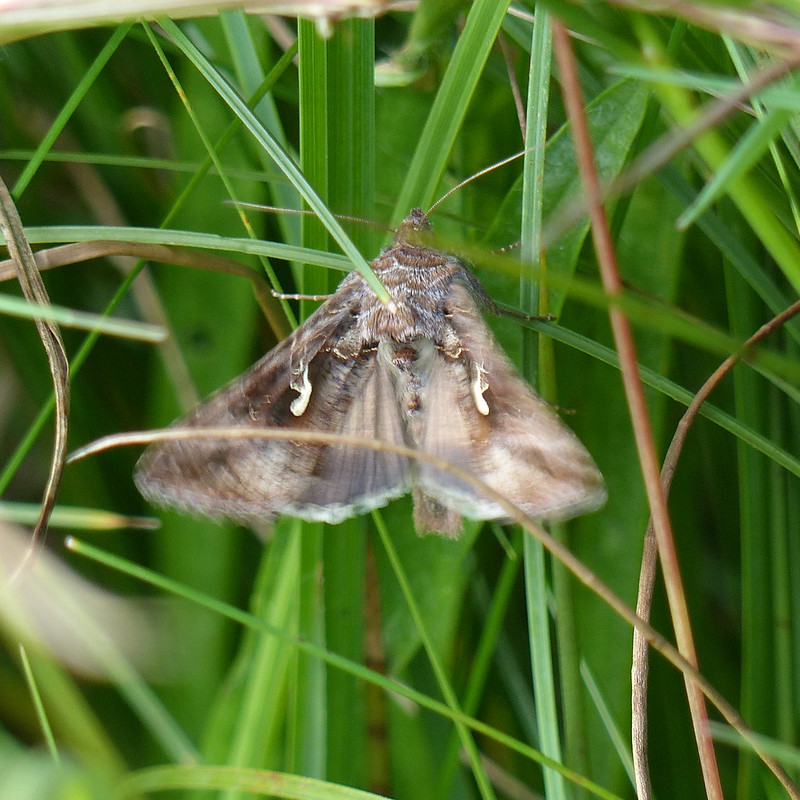
Silver Y moths, on the other hand, seem to stay low in the grass and continually flap their wings, which must be very energy inefficient. Although they breed in the UK, they also migrate here (presumably from mainland Europe).
“The Silver Y migrates to the UK in massive numbers each year – sometimes, an estimated 220 million can reach our shores in spring!”
The scientific name is Autographa gamma which I rather like. And gamma, γ, is at least as good an approximation as y to the marking on the moth.
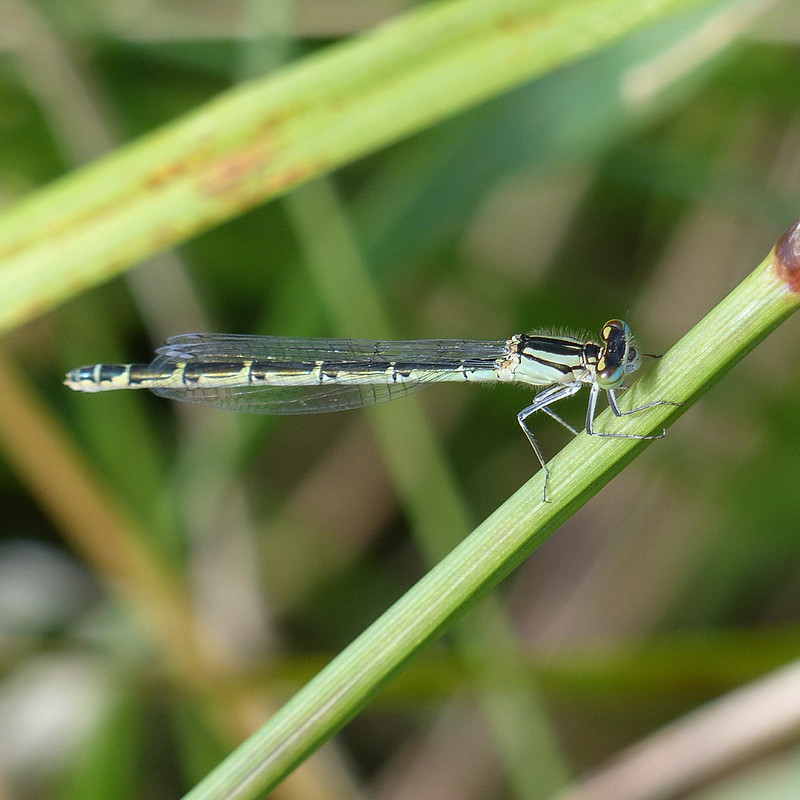

For a while I watched the dragonflies darting about overhead, trying to see where they went when they flew into the trees. Eventually, I did notice the perch of another Migrant Hawker, high overhead…


Volucella pellucens – the Pellucid Fly, or the Pellucid Hoverfly, or the White-banded Drone-fly. Three ‘common’ names; I’ve used apostrophes because for a creature to have a ‘common’ name suggests it’s a regular topic of conversation in households up and down the country, which seems a bit unlikely, unfortunately.
“The fly is very fond of bramble blossoms”, according to my Field Guide.
“Its larvae live in the nests of social wasps and bumblebees, eating waste products and the bee larvae.“

This damselfly has me a bit confused; it has red eyes, but those beer pump handle markings (my Dragonfly field guide says ‘rockets’ – I think messers Smallshire and Swash need to get out more) suggest the blue-form of the female Common Blue Damselfly, so I’m going for that. This makes me think that I have probably misidentified damselflies in the past. What am I talking about? Of course I’ve misidentified damselflies – I’ve probably misidentified just about everything! All I hope for is that my percentage accuracy is gradually improving – I’ll settle for that.
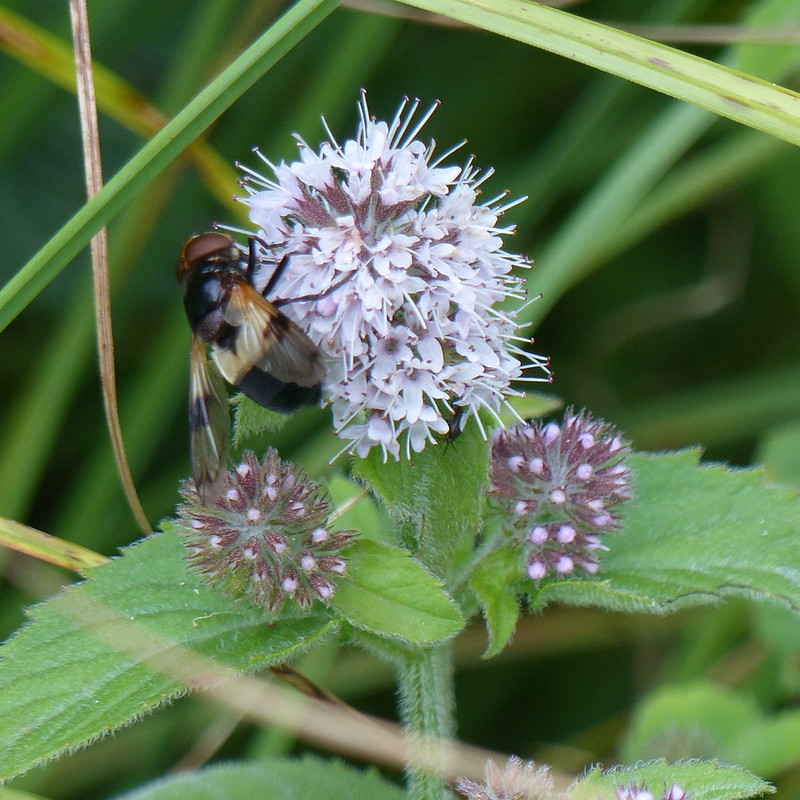

Like the Silver Y, the Comma is named for a mark on its wings, but it’s on the underside so you can’t see it here.
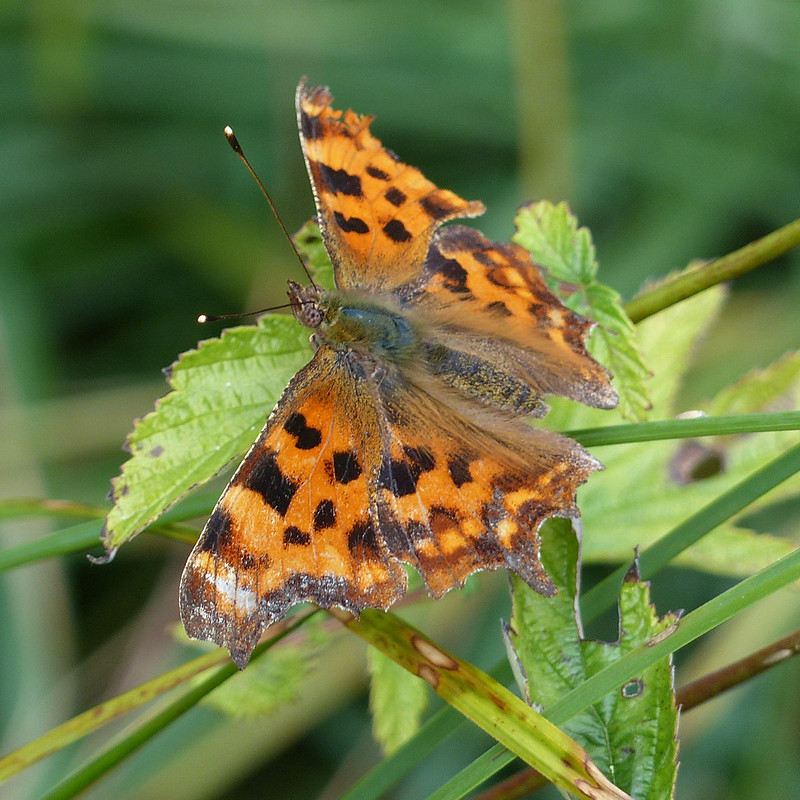
I took lots of photos of rather distant Commas and then this one landed pretty much at my feet, so close, in fact, that I needed to back up a little to get it in focus.
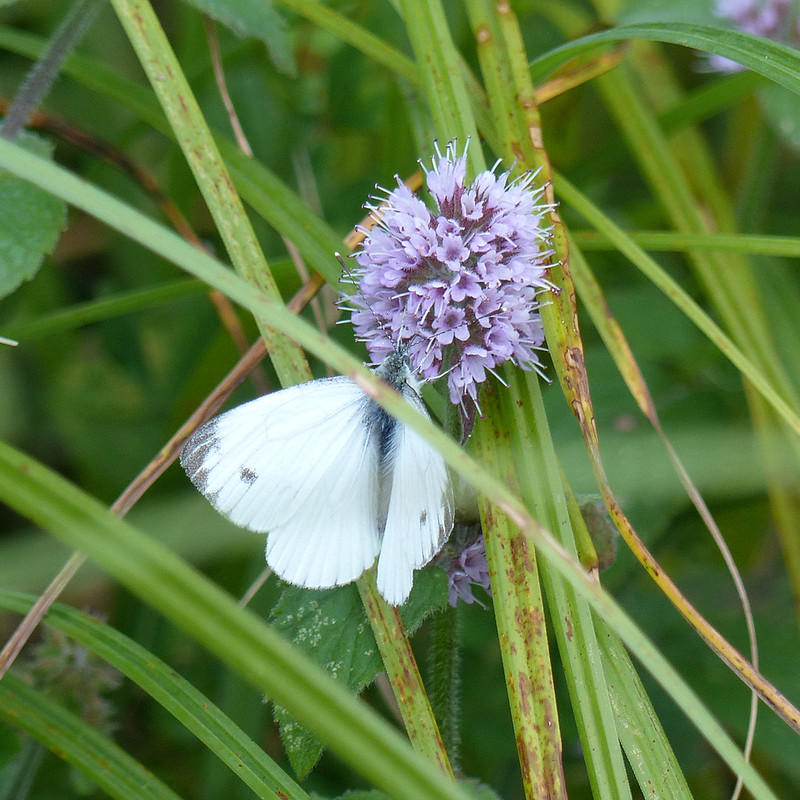
White butterflies don’t often rest long enough to be photographed. They are also very confusing – this could, to my non-expert-gaze, be a Small White, a female Orange-tip, or a Green-veined White. But the underwings reveal that it is a Green-veined White.

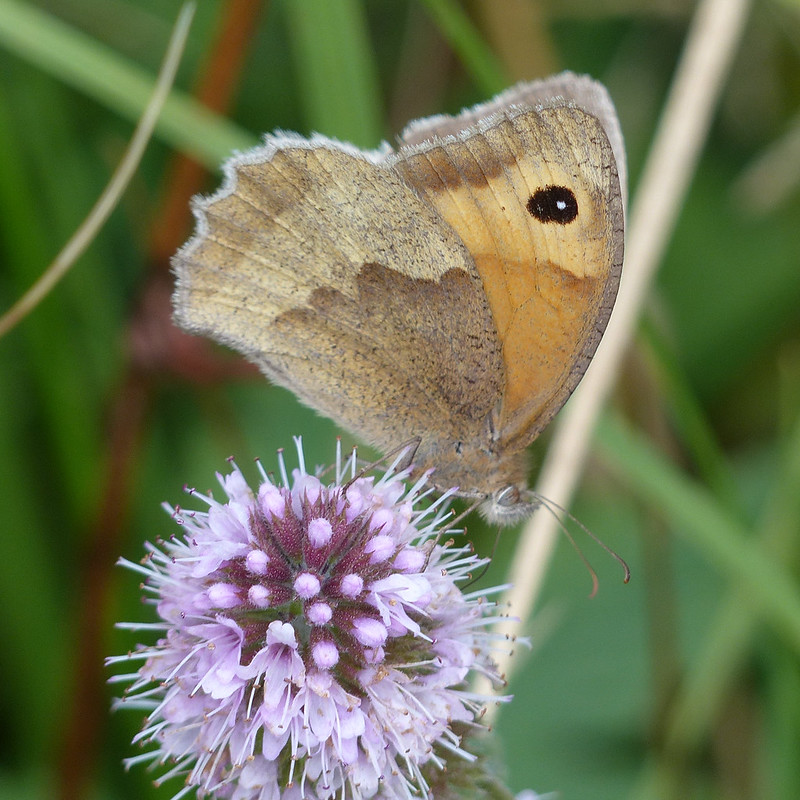
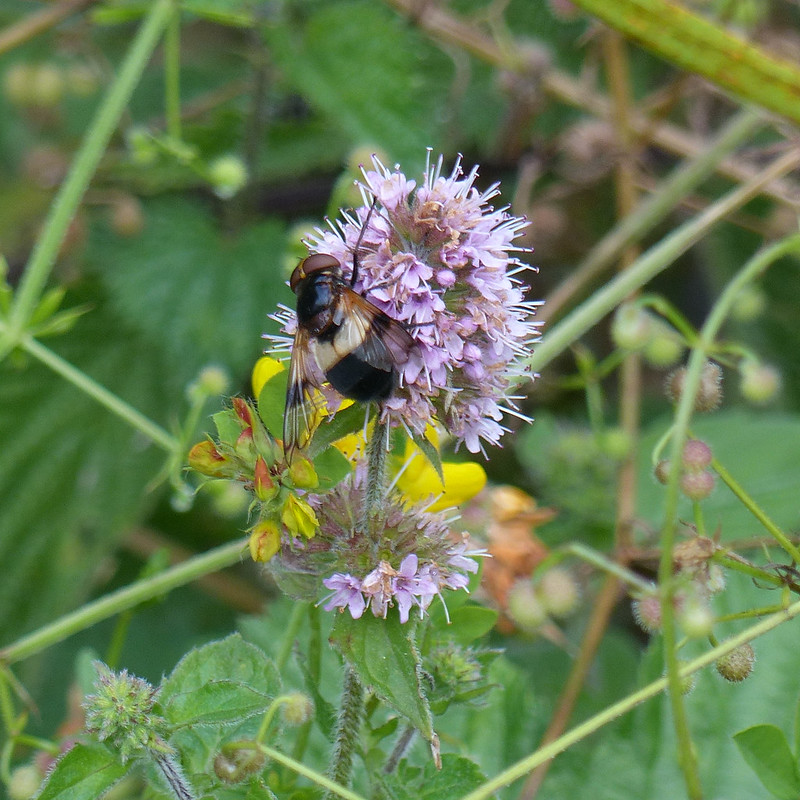
Brambles have a very long flowering season – maybe Pellucid Flies like to branch out when other favoured plants are available.

The sheer variety of Hoverflies is amazing, but also frustrating, because they are so hard to identify. This could be a Drone-fly, but it has dark patches on its wings. I’m edging towards Eristalis horticola but with my usual very low degree of confidence.




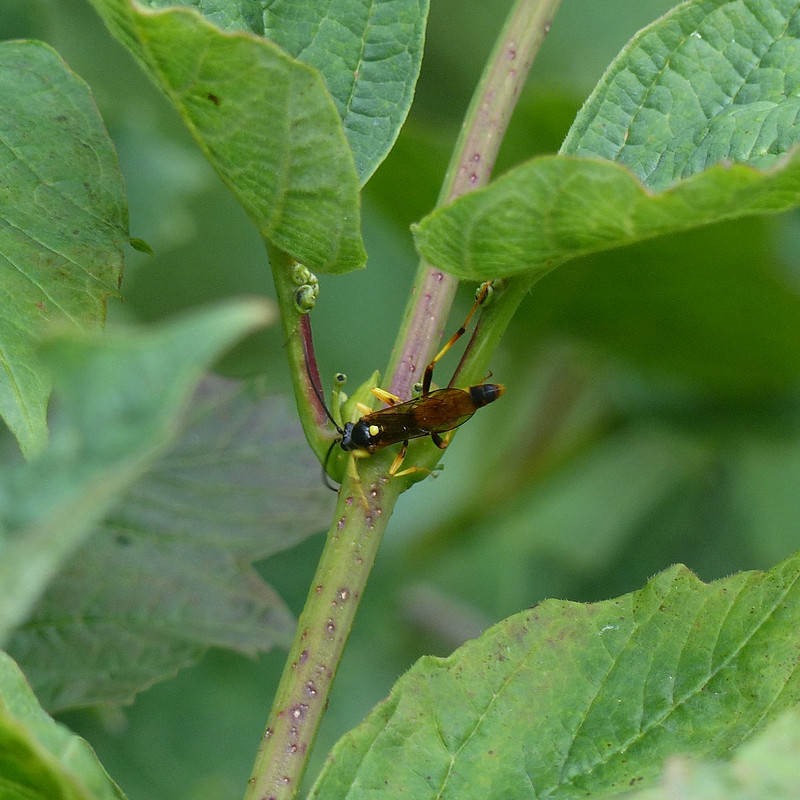
This creature led me a merry dance; it was constantly on the move, roving around the leaves and stems of a Guelder Rose bush, then flying off, disappearing from view, only to return seconds later. At first I thought it was a Sawfly, but it was very wasp-waisted so now I’m inclined to think it was an Ichneumon wasp.
Tentatively, it could be a male Ichneumon extensorius which has the bright yellow scutellum, black unbanded antennae and black and yellow legs and body. However, my online source says “hardly any British records exist for this species”, which is a bit off-putting.

Whatever it is, it kept me well-entertained for a few minutes.

Eugh! A slug! But even this slug, which was on an Angelica stem, has a rather striking striped rim to its foot.
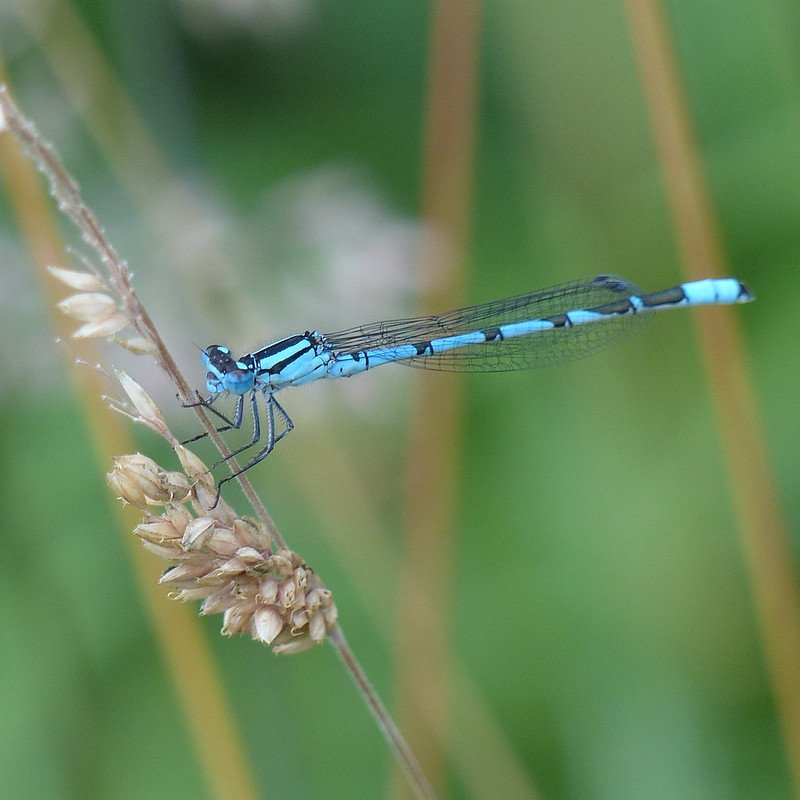

When I spotted this creature, on a Figwort leaf, at first I thought I was seeing another of the yellow and black creatures I had seen before. It has a yellow scutellum, and substantially yellow legs. But – the antennae are orange, it lacks the narrow waist, and its abdomen is heavily striped. It was much more obliging than the previous creature, both in terms of posing for photos and in terms of being readily identified. It turns out this is a Figwort Sawfly.
“The larvae feed on Figwort plants and are usually seen in August and September. The adults are carnivores mainly, hunting small flies and other insects.”
Hmmmm – usually seen in August and September – I think I need to go and have a look at some Figworts.
Incidentally, I was hoping I would see some Broad-bodied Chaser Dragonflies, and usually look out for them in an area of tall plants – Great Willow-herb and Figwort – by the path which crosses the meadow. I didn’t see any, but in looking I noticed that the generally tall Figwort plants were much shorter and less numerous than usual. I suspect they were suffering due to our unusually hot and dry summer.
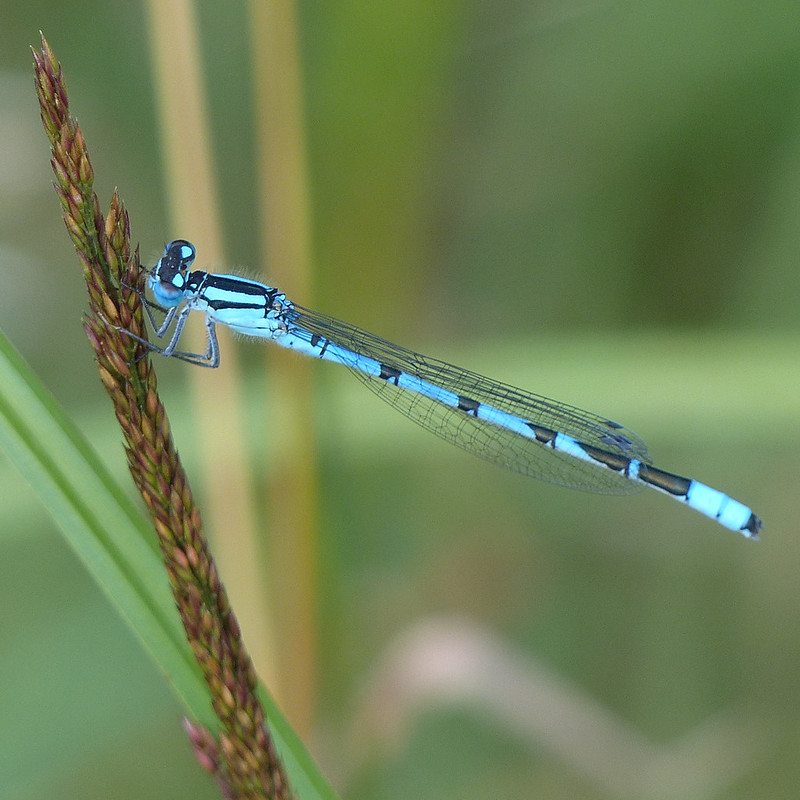
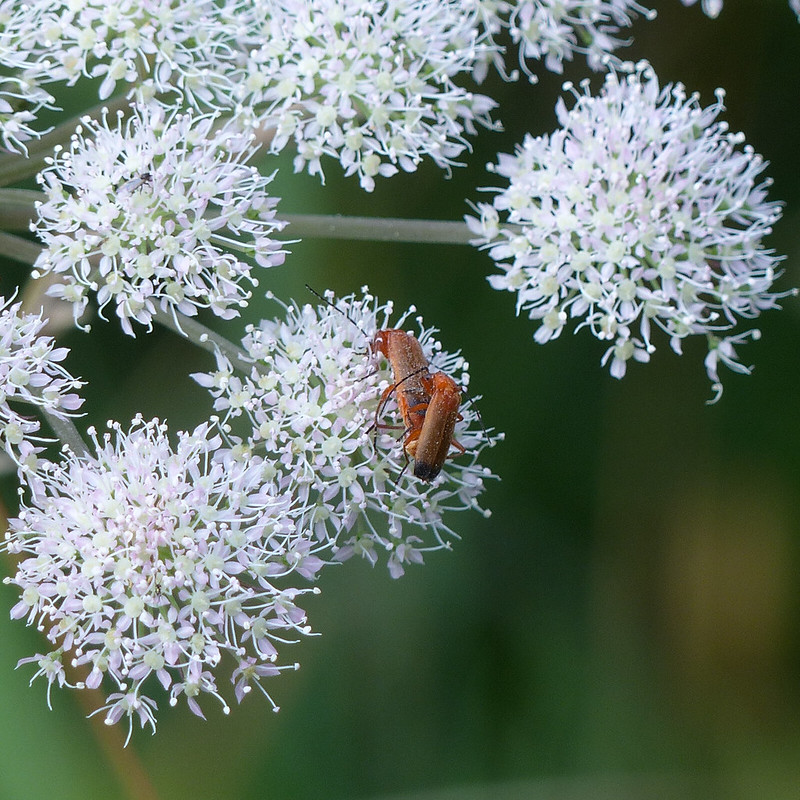
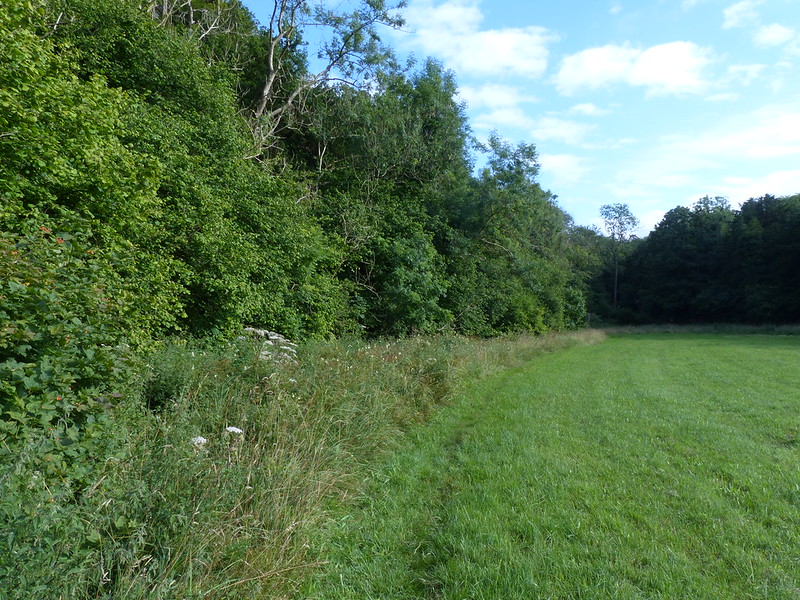



Blimey – I made it to the end! Well done if you did too. If my holiday posts take this long to put together, I will never catch up!












